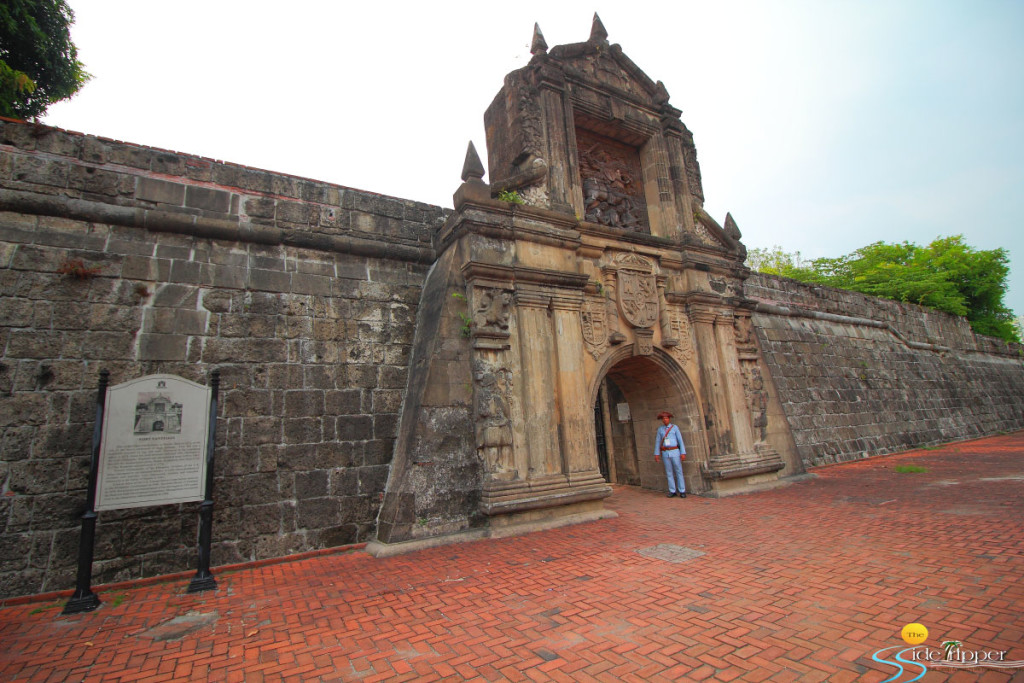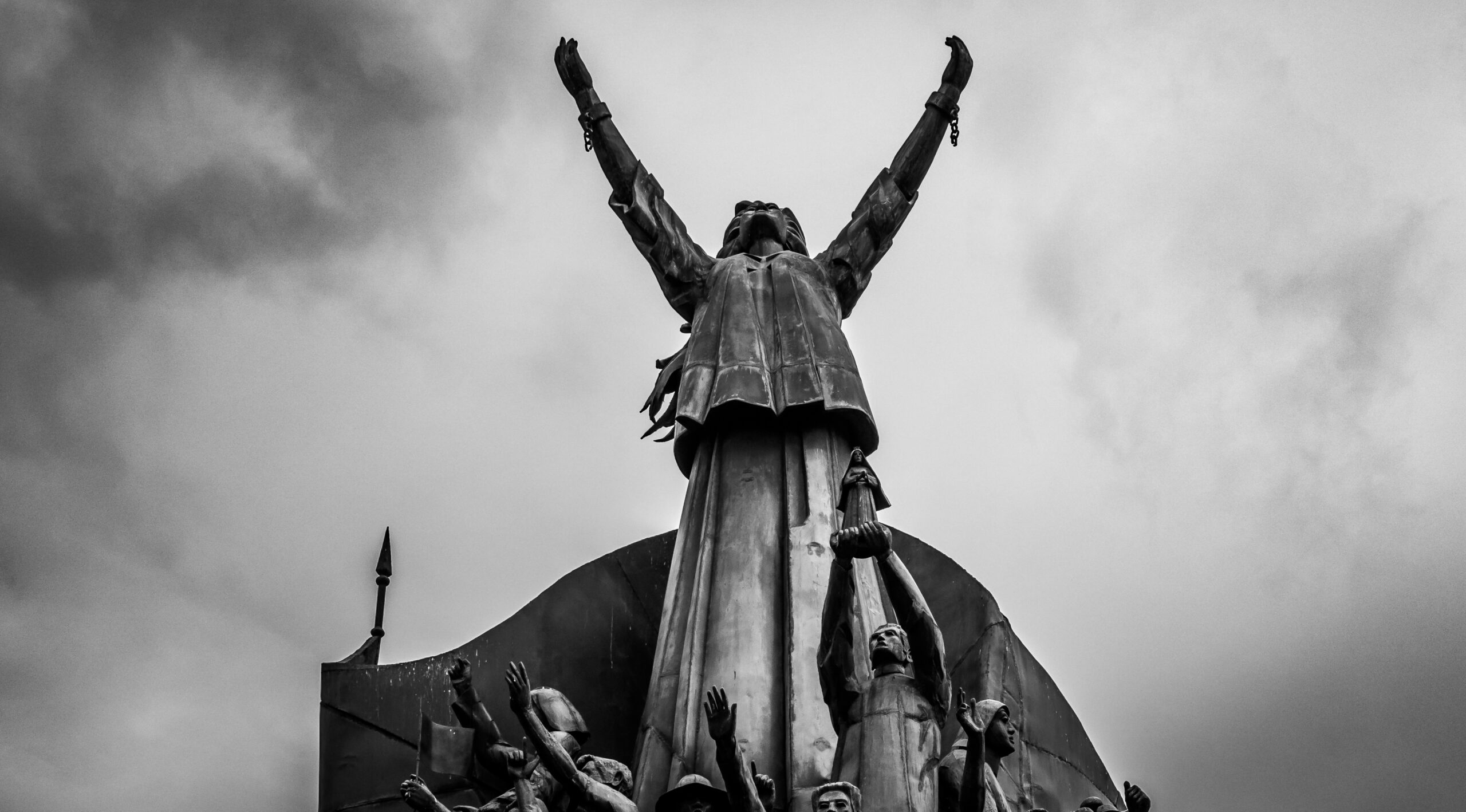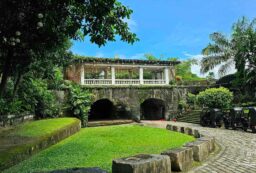A day before June 12 or the 117th year of our independence as a country, I brought my son to two of the most important historical places in the Manila: the National Museum and Fort Santiago in Intramuros, Manila City.
Passing through Rizal Park brought back a lot of memories not only for me but also my son, since we have brought him there two years ago. It was his request to see Fort Santiago again because for some reason, he is into Jose Rizal and his life as our national hero. I also think that it’s important for young kids like him to commemorate the Philippine Independence Day and see fragments of history as they actually are, rather than merely googling about it over his Ipad. These days, I feel like unless one makes an extra effort, the subject of History such as that of Intramuros will not really be introduced to today’s generation compared to mine — talk about the irony of too much information availability.
Fort Santiago in Intramuros is also referred to as the Walled City of Manila. It is one of the most historic site that’s built during the Spanish era. This was the time when the Philippines was still under the Spanish Government as defensive fortress designed to protect the newly formed city of Manila. Jose Rizal our National hero was imprisoned at the Fort Santiago before his execution in 1896. The place played a role in the city’s penal and defense system all the way up to World War II, and has been occupied by the Spanish people, the free Filipinos, individuals from the US and the Japanese Imperial Army.


 This 16th century structure is home to a shrine dedicated to Rizal, which includes an eerie set of footprints painted onto the street outlining the great man’s final steps as he was led to his death. In here, you will also see a life-sized Rizal sitting in one room where he was confined. You will also see some of the memorabilias of Rizal as well as the two copies of Rizal’s two popular books: Noli Me Tangere and El Filibusterismo.
This 16th century structure is home to a shrine dedicated to Rizal, which includes an eerie set of footprints painted onto the street outlining the great man’s final steps as he was led to his death. In here, you will also see a life-sized Rizal sitting in one room where he was confined. You will also see some of the memorabilias of Rizal as well as the two copies of Rizal’s two popular books: Noli Me Tangere and El Filibusterismo.
My first glance of Fort Santiago in Intramuros Manila was about more than 20 years ago through a field trip during my college years. We were able to visit again about ten years ago with my wife and then my son when he was still a little boy maybe a year old that time. I can say that the place hardly changed. It’s the same Fort Santiago that I saw way back then, except maybe that some interactive room was put uptoday with a wide screen television showing the life of Rizal.





I noticed that fewer people are now visiting Fort Santiago, and I’m just not sure if it’s because it’s a weekday when my son and I recently visited. I only got to see a few Filipinas who are married to a foreigner who look eager to know more about how our country was before. I also saw a few Japanese tourists in the area, but less than ten Filipinos were there during that time of my visit. Also, after field trip, few people visit the place again and I doubt if it’s still in our future itineraries.
Sometimes, we only remember our history and culture during the holidays like the National Independence Day. Sadly, some people got to know Ninoy Aquino only because he was the father of our President and also of Kris Aquino. Maybe we forgot those Filipino peoples who fought for our Independence.




More Photos Inside Fort Santiago Intramuros Manila here
I am sure lots of Filipinos were able to visit the Fort Santiago especially those who are studying in Metro Manila or in Luzon because Fort Santiago is still the place for field trips. However, seldom of those who are from Visayas and Mindanao can visit this historic place.
I hope efforts to preserve our national cultural heritage will be given high priority, and I am happy to hear that the NCCA (National Commission for Culture and the Arts) bought Metropolitan Theater and they help fight against structures that are photo bombers of the Rizal Park (I am happier that I was ableto capture a photo ofthe Rizal Park before its view got destracted).

Rizal Monument – Rizal Park Manila Taken April 2012 The Last Beauty of Rizal Monument
Rizal Monument – Rizal Park by Imahe
Fort Santiago is ideal for picnics and scenic walks, and there are even open-air theater performances. Aside from these, hopefully the agency in charge of Fort Santiago will formulate plans that will encourage more reasons for visitors and tourists to come back.
For me, there are some available spaces and areas that can be restored, more facilities that can be installed to attract more visitors. It is also home to the artists, so I thought why not develop an interactive area inside Fort Santiago like the 3D painting in Art in the Island, but this time, to feature Filipino culture and history? I know that there are still a great number of people and organizations who want to develop and preserve our historical and cultural resources as they will also help our nation’s economic development through Tourism. There are a lot of things that we can do to preserve our heritage and our historical places apart from the Fort Santiago. For now, I can only request for something basic; such as the provision of better parking area for those tourists who would go there with cars.
I am inviting you all to visit Fort Santiago. It is located at the Santa Clara Street along the Pasig River in Manila. Admission is for PhP 75 per adult, and PhP 50 per child and rate applies as well to students. It is open from 8am to 6pm daily.
Fort Santiago Map – How to get there








